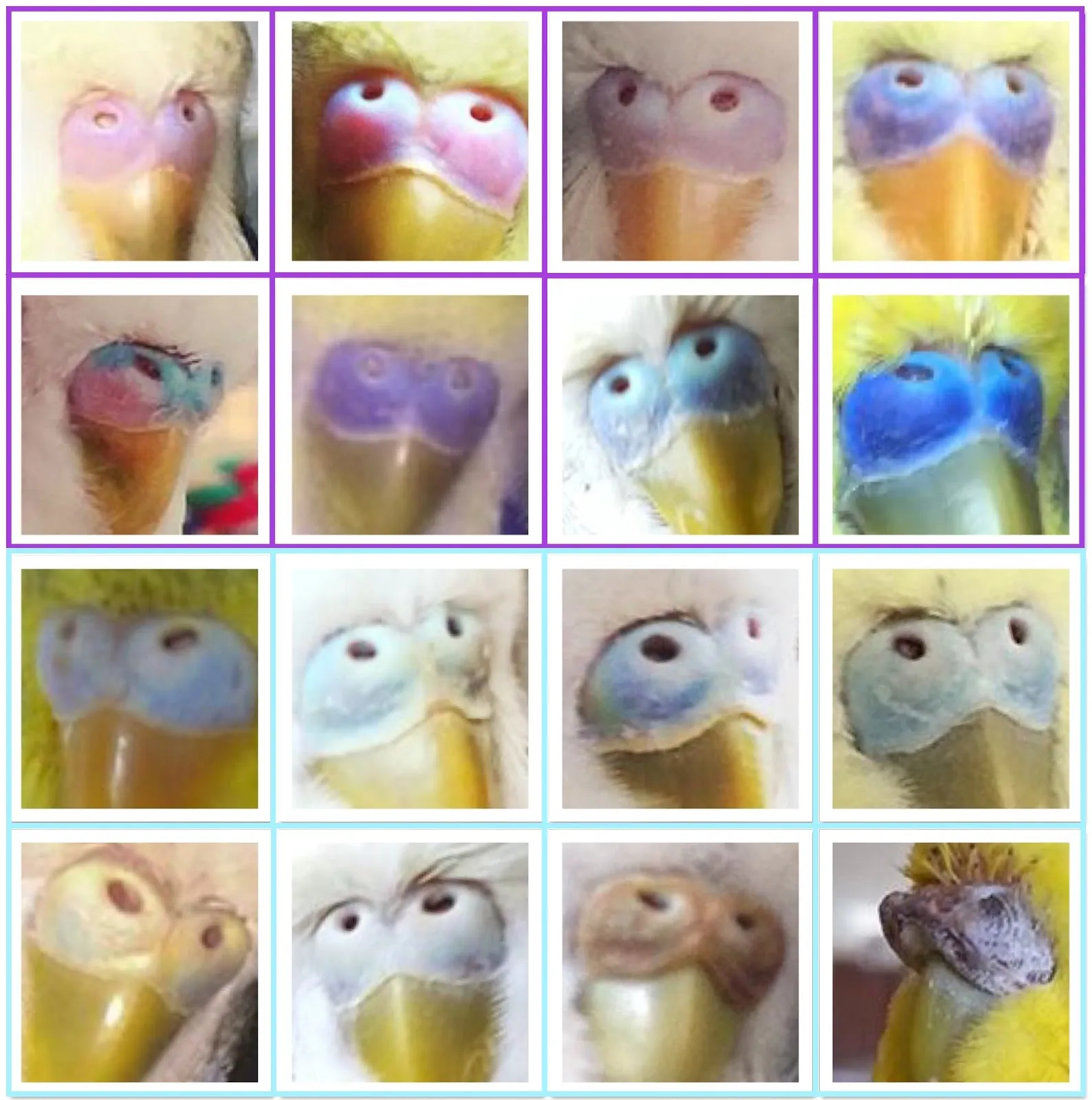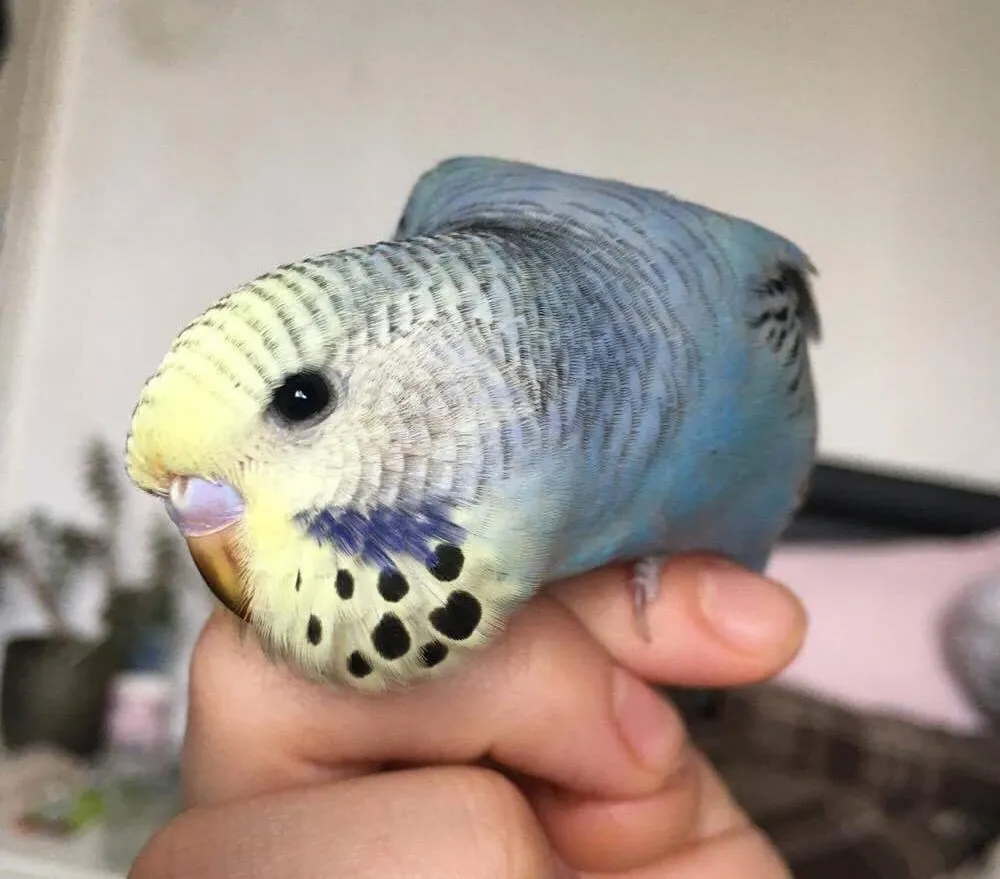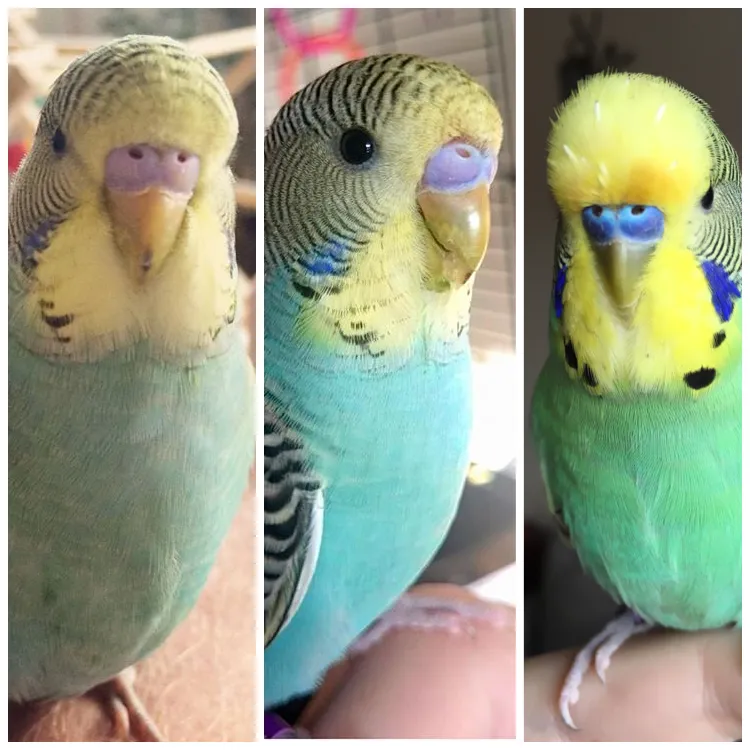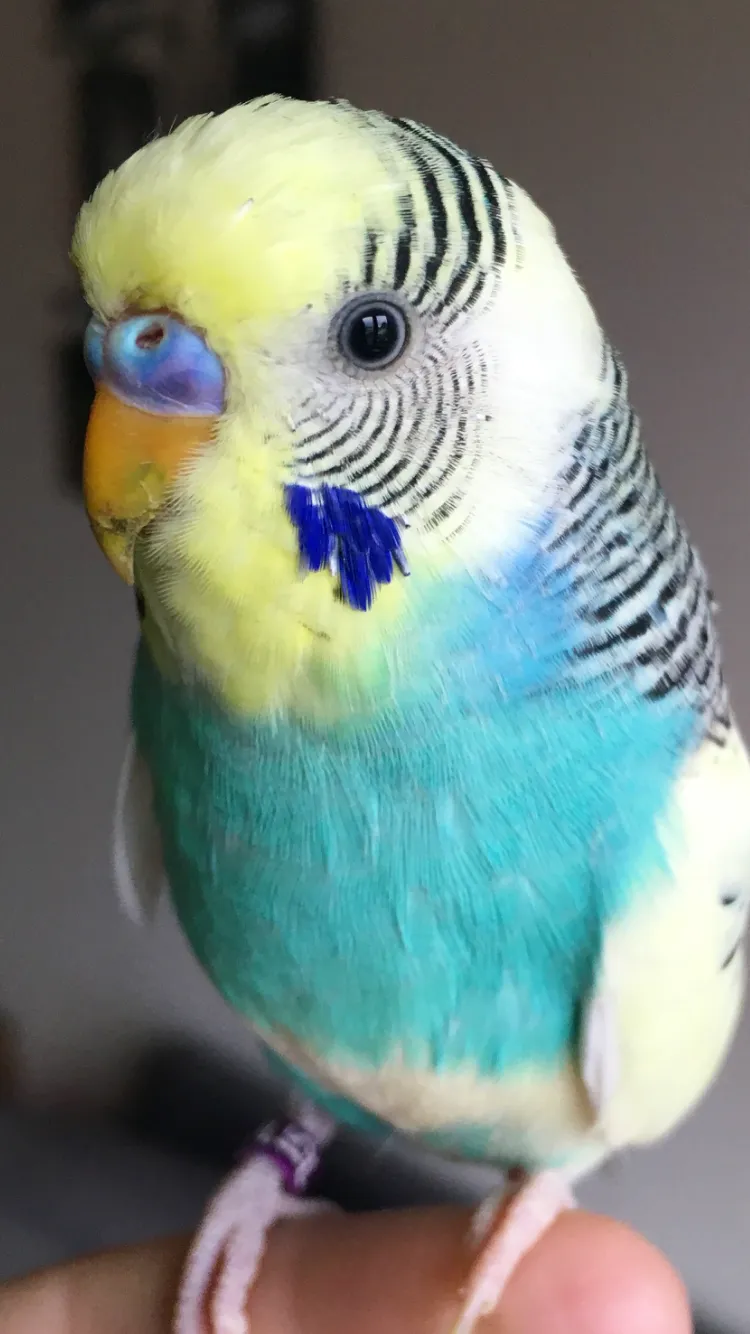Determining the sex of your budgie, also known as a parakeet, doesn’t have to be complicated. Budgie sexing primarily relies on the color and texture of the cere—the fleshy area above the beak. Many new owners struggle with this, especially when seeing pink or blue hues that defy common stereotypes. If you’re wondering how to sex budgies accurately, focus on age-specific cere characteristics rather than assuming pink means female or blue means male. This guide breaks it down simply, using real examples to help you identify your bird’s gender confidently.
Young budgies can trick even experienced owners because their ceres change over time. By around 8 weeks, distinct features emerge, though some mutations create exceptions. Understanding these patterns ensures reliable budgie sexing without guesswork.
 Budgie cere color chart showing young and adult male vs female differences
Budgie cere color chart showing young and adult male vs female differences
Cere Colors by Age and Sex
The cere is your best tool for budgie sexing. Here’s the standard progression:
- Baby males: Pink or purple cere.
- Adult males: Solid royal blue cere, uniform and smooth.
- Baby females: Bluish-white cere with white rings around the nostrils.
- Adult females: White cere turning crusty brown as they mature.
Avoid confusing a baby female’s light blue cere with an adult male’s deep blue. Young females often have white nostril edges and uneven texture, while males stay even-toned. All females eventually develop brown ceres, providing final confirmation.
 Real budgie examples of male cere progression from pink to blue and female blue variations
Real budgie examples of male cere progression from pink to blue and female blue variations
Common Mistakes in Budgie Sexing
A frequent error is assuming blue ceres are always male. Baby females show pale blue with white borders, while males go pink first. Check for head bars too—if present with blue cere, it’s likely female. Pink ceres on babies signal males, not females.
For more on bird mutations like pieds that affect cere color, check out our guide on the pionus bird.
Exceptions to the Rule
Certain mutations, like pieds or lutinos, keep males pinkish or mottled lifelong instead of fully blue. Texture and lack of white nostrils distinguish them. Females may retain baby pink edges briefly, but white nostrils confirm their sex.
 Pied budgie male with persistent pink cere despite adult age
Pied budgie male with persistent pink cere despite adult age
Eva, a young female from @budgie_gang on Instagram, shows pink tinges but obvious white nostrils. Compare Bella and Bert: Bella’s light blue has white rings; Bert’s is solid dark blue.
 Young female and male budgies Bella and Bert with contrasting blue ceres
Young female and male budgies Bella and Bert with contrasting blue ceres Close-up of Bella and Bert showing female cere browning and male uniformity
Close-up of Bella and Bert showing female cere browning and male uniformity
Male Budgie Examples
Reggie exemplifies perfect male progression: pink at 8 weeks, purple intermediate, royal blue at 8 months—no white, uniform color.
 Reggie the male budgie's cere change from baby pink to adult blue
Reggie the male budgie's cere change from baby pink to adult blue
Ernie’s light pink lacks female white; Jaydyn mixes pink and blue without brown.
Paulie follows standard blue; Puffy, a pied, stays pink—proving pink equals male.
 Buster's cere evolution from light pink to purple-blue mix
Buster's cere evolution from light pink to purple-blue mix
Other males like those from @puffy_and_chico show pied persistence.
 Paulie and Puffy pied male budgies with pink ceres
Paulie and Puffy pied male budgies with pink ceres
Female Budgie Examples
Do from @4budgieslife has blue tint and white nostrils, mid-molt.
 Young female Do with blue-white cere and white nostrils
Young female Do with blue-white cere and white nostrils
Rio at 8 months retains faint blue; Little G shows blue-to-brown shift.
Skyler’s adult brown confirms female maturity.
Additional Sexing Clues
While cere is primary, consider:
- Egg-laying: Females only.
- Size: Males often larger.
- Feet: Mature males blue-tinted; females pinkish.
- Behavior: Males more vocal/singing; females sharper chirps. Females can talk too.
Mating behaviors occur regardless of sex—don’t rely on them.
Conclusion
Mastering budgie sexing comes down to observing cere color, texture, and age. Males start pink and go blue; females blue-white to brown. Exceptions like pieds reinforce checking details. Consult avian vets for confirmation, especially with mutations. Share your budgie’s photos on social media for community input, but trust these guidelines. For more bird care tips, explore our resources and keep your feathered friend thriving!
References
- Avian Web: Budgerigar Sexing Guide
- Parrot Society UK: Cere Morphology in Parakeets
